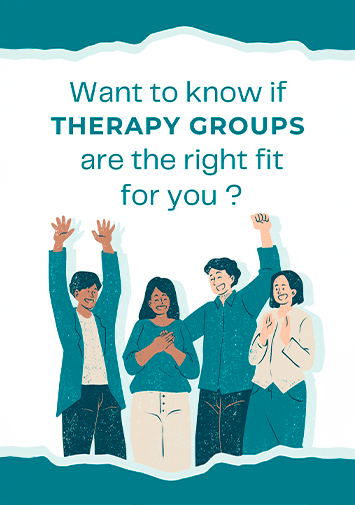It is likely that, at some point in your life, you will experience some kind of distressing event that impacts your ability to cope. Research indicates that 50% of people experience at least one trauma in their lives.
Trauma can appear in our life suddenly, like the unexpected death of a loved one or a car accident. But it also can be a long-lasting and ongoing experience, such as a chronic illness or an abusive relationship.
While not all trauma causes long-term negative consequences, the experience of trauma can profoundly affect our emotional, physical, and psychological functioning. This is where EMDR therapy comes in. So, what exactly is EMDR and how can it help you cope with Trauma?
What is EMDR Therapy?
EMDR, or Eye Movement Desensitization and Reprocessing, is a psychotherapy that uses eye movements and other bilateral (left-right) stimulation, to help people move out from the psychological distress of a traumatic event into a healing state.
Originally, EMDR was designed to treat Post-Traumatic Stress Disorder (PTSD). However, over the last 30 years of research, it proved to be an effective treatment for abuse, neglect, life-threatening accidents, grief. As well as, anxiety, depression, eating disorders, and substance abuse.
How Does EMDR Therapy Work?
The idea behind EMDR is that trauma continues to cause distress because the negative memories were never correctly processed. Much like the traumatic experience has become “frozen in time”. So, when those memories are triggered, they may feel as bad and intense as living it for the first time. All those emotions, images, sounds, and smells come rushing back.
Through EMDR therapy, the traumatic memories are safely reprocessed in the brain until they’re no longer distressful and harmful. Over time, these memories become less vivid and the symptoms fade.
In some cases, stirring up these traumatic memories can be extremely difficult, especially in the beginning. This is completely normal because our brain is very resistant to change. It wants to cling to its old beliefs and ways of thinking, even when they’re awfully painful.
As you walk through the different phases of EMDR therapy, your brain begins to readjust and the fear and pain associated with the trauma subside. So, although it may be uncomfortable at first, the goal is your ultimate well-being and happiness.
How Can EMDR Therapy Help?
1. You will learn to reprocess trauma until you no longer feel disturbed by it
Bilateral stimulation, along with focusing on a specific traumatic event, will allow your brain to change the way that memory was stored and break any associations with negative symptoms.
This happens because, during the sessions, you will focus on movements or sounds while recalling the specific memory that causes you distress, and work to replace it with a positive belief about yourself.
2. You will work with your therapist as a team
The success of EMDR therapy requires a bond of trust between the Client and the Therapist. Here is where the ability of the Therapist to connect with the Client gains even greater importance.
The emotional demands of venturing into the unchartered waters of past trauma require a truly non-judgmental, supportive, and safe space. Therapists and Clients need to collaborate to find the specific route that can lead them safely to new and healthier shores.
3. You will keep working on your progress daily
Your Therapist will likely ask you to keep practicing every day, to maintain progress between sessions. Also, you will be given a few self-soothing techniques to remain calm if negative feelings emerge, such as:
- Daily journaling, to track physical sensations or negative thoughts and the relaxation techniques you put into practice.
- Imagery, which allows you to picture yourself gradually facing your fears.
- Visualization, to imagine a peaceful and safe environment.
4. You will experience fast results
EMDR is a brief psychotherapy that provides rapid relief. It is typically scheduled once or twice a week for a total of 6 to 12 sessions.
Although each person’s journey is unique, it is possible to see positive results after the first session. In fact, studies reported that 80% to 90% of people begin to feel better within the first three sessions.
What Do You Need to Know Before Starting EMDR Therapy?
EMDR is a specialized therapy that requires specific training. So, it is important to look for a qualified professional, with whom you feel comfortable taking this new step.
Keep in mind that, recalling traumatic events can awaken a lot of difficult emotions, particularly at the onset of therapy. You and your Therapist will have to work together to find ways to cope with these feelings as you go through the therapy process.






